#native american peoples
Explore tagged Tumblr posts
Text
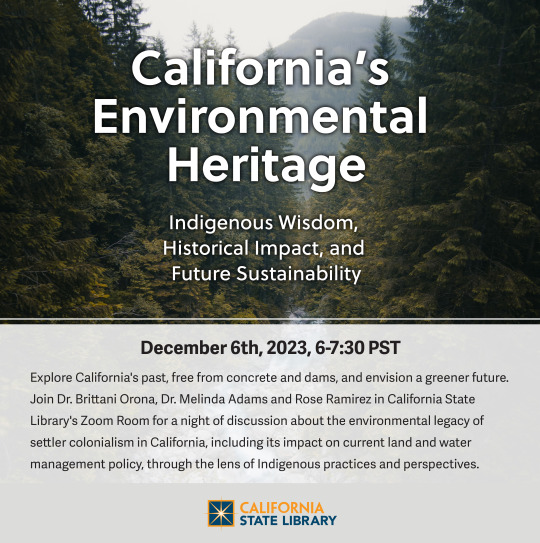
Explore California's past, free from concrete and dams, and envision a greener future. Join Dr. Brittani Orona, Dr. Melinda Adams and Rose Ramirez in California State Library's Zoom Room for a night of discussion about the environmental legacy of settler colonialism in California, including its impact on current land and water management policy, through the lens of Indigenous practices and perspectives. To register, please visit https://libraryca.libcal.com/event/11406831.
#Water Management#Indigenous History#Indigenous Cultures#california#california history#colonialism#environmentalism#virtual event#native american peoples#native american tradition
13 notes
·
View notes
Text
"A tribal-led nonprofit is creating a network of native bison ranchers that are restoring ecosystems on the Great Plains, restoring native ranchers’ connections with their ancestral land, and restoring the native diet that their ancestors relied on.
Called the Tanka Fund, they coordinate donors and partners to help ranchers secure grazing land access, funds needed to install and repair fencing, increase their herd sizes, and access markets for bison meat across the country.
That’s the human part of the story. But as Dawn Sherman, executive director of the Tanka Fund, told Native Sun News, they’re “buffalo people” and these four-legged, 2,000 lbs. “cousins” are equal-part-protagonists.
The return of the bison means the return of the prairie, one of the three great grassland ecosystems on the planet, of which just 1% remains as it was when the Mayflower arrived.
“Bringing buffalo back to their ancestral homelands is essential to restoring the ecosystem. We know that the buffalo is a keystone species,” said Dawn Sherman, a member of the Lakota, Delaware, Shawnee, and Cree.
“Bringing the buffalo back to the land and to our people, helps restore the ecosystem and everything it supports from the animals to the plants to the people. It’s come full circle. That’s how we see it.”
As Sherman and the Tanka Fund help native ranchers grow their operations, everyone is well aware of the power of the bison to transform the environment: just as nations across Europe are, who are reintroducing wood bison to various ecosystems, for all the same reasons.
Sherman points out the variety of ways in which buffalo anchor the prairie ecosystem. The almost-extinct black-footed ferret, she points out, lived symbiotically with the bison, and with the latter gone, the former followed—nearly.
The long-billed curlew uses bison dung as a disguise to hide nests from predators. Deer, pronghorn antelope, and elk all rely on bison to plow through deep snows and uncover the grasses that these smaller animals can’t reach.
Everywhere the bison hurls its massive body, life springs in the beast’s wake. When bison roll about on the plains, it creates depressions known as wallows. These fill with rainwater and create enormous puddles where amphibians and insects thrive and reproduce. Certain plants evolved to grow in the wet conditions of the wallows which Native Americans harvested for food and medicine.
Native plants evolved under the trampling hooves of millions of bison, and that constant tamping down of the Earth is a key necessity in the spreading of native wildflower seed.
Indeed, Sherman says some of these native ranchers are bringing bison onto lands still visibly affected by the Dust Bowl, and already the animals are acting like a giant wooly cure-all for the land’s ills.
Since 2020, the Tanka Fund, in partnership with the Inter-Tribal Buffalo Council and the Nature Conservancy, has overseen the transfer of 2,300 bison from Nature Conservancy reserves to lands managed by ranchers within the Tanka Fund network.
“[T]he more animals that we can get the more of that prairie we can restore,” said Sherman. “We can help restore the land that has been plowed and has been leased out to cattle ranchers.”"
youtube
-Article via Good News Network, February 13, 2025. Video via Tanka Fund, July 17, 2024.
#indigenous#indigenous peoples#first nations#native americans#bison#ecology#ecosystem#ecosystem restoration#keystone species#endangered species#environment#prairie#great plains#land back#good news#hope#Youtube
14K notes
·
View notes
Text

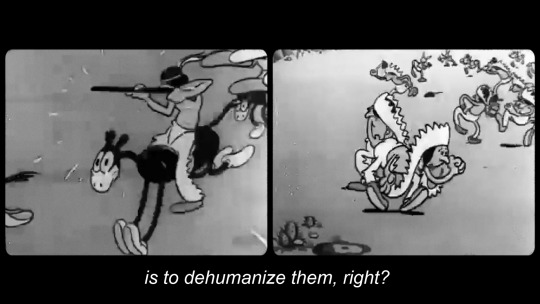
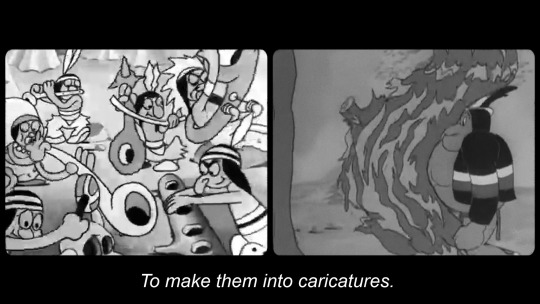
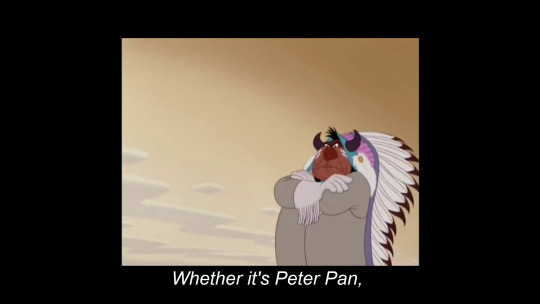


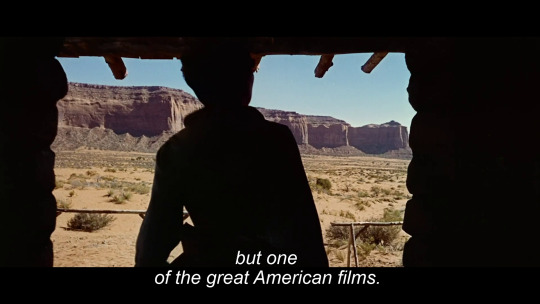
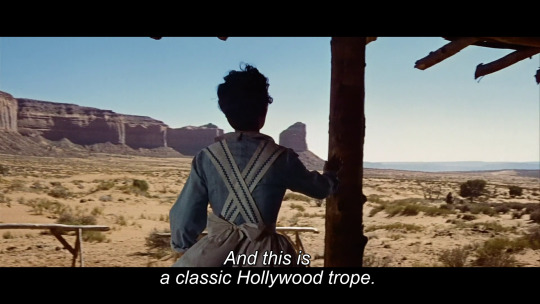


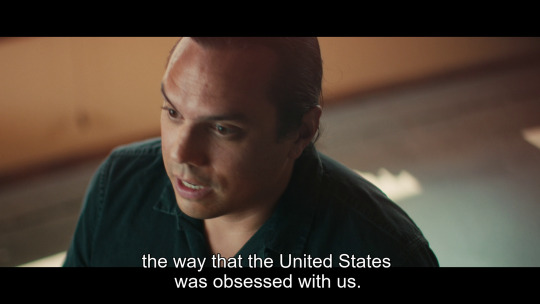
Lakota Nation vs. United States (Jesse Short Bull & Laura Tomaselli, 2022)
#lakota#indigenous#indigenous people#jesse short bull#laura tomaselli#female filmmakers#female directors#female directed films#women in film#native american#lakota nations vs. united states#documentary
56K notes
·
View notes
Text
this is a great time of year to buy from native stores or donate to native organizations. you can figure out who's land you're on here, and below i've listed some (of many) businesses you can support ♡




B.Yellowtail --- jewlery, clothing, and home goods designed by Bethany Yellowtail, citizen of the Northern Cheyenne Nation and from the Apsáalooke (Crow) Nation
Cheekbone Beauty --- sustainable, low-waste beauty products from Jenn Harper, an Anishinaabe artist based in Canada
Trickster --- atheletic products from Tlingit and Deg Hit’an Athabascan siblings (Alaska)
NativeHumboldt on Etsy --- the artist, Shayna McCullough, and their fiancé make designs inspired by traditional designs from their culture; she is from the Yurok tribe and descended from the Hupa, Karuk, Redwood Creek, Pit River, Yuki, Wintun, Pomo (tribes in California), and Chetco tribe (in Oregon)
OklahomaThirtyNine on Etsy --- they mostly sell beaded work, particularly earrings, as well as some necklaces
xBeadsByMandyx on Etsy --- handmade beaded earrings, from a Cherokee veteran
food products, from wine to sauces to teas to mixes to fish to jerky and nuts, sorted by store with details beside each store


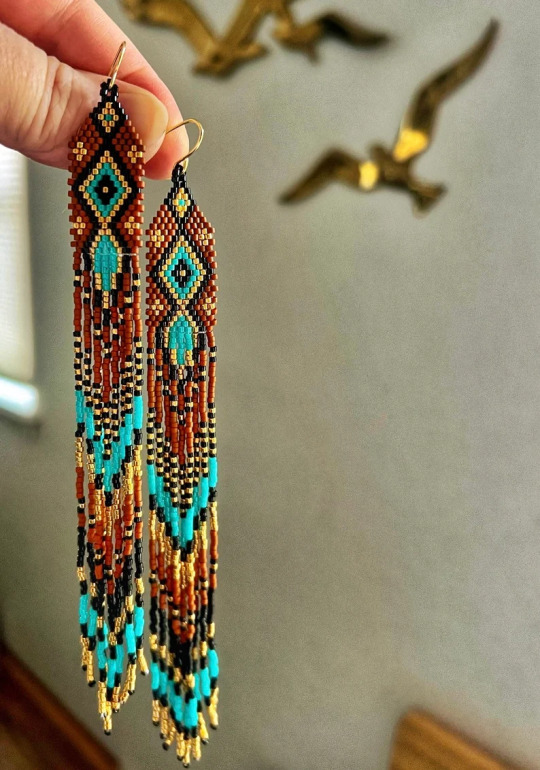
#indigenous people's day#art#native art#culture#food#indigenous#native american#native businesses#buy native#small business
6K notes
·
View notes
Text
#land back#illinois#prarie band powtawatomi nation#american indians#indians#indigenous#native american#ndn#usa#landback#indigenous culture#indigenous history#indigenous peoples#indigenous rights#indigenous sovereignty#land rights
3K notes
·
View notes
Text
to any americans who feel "paralyzed" and "dont know what to do" to help with gaza:
reading a fucking book. i beg of you.
in a time of knowledge suppression is it your duty to arm yourself with knowledge.
read about americas occupations in the middle east.
read about 9/11 from outside of america and see how they inflicted senseless harm and violence to countless amounts of people and have been suppressing your rights for the past 2 fucking decades.
read about any of the countless wars from the past 30 years. especially from a civilian's. and the victims and survivors' perspective. listen to the horror stories and do not plug your fucking ears as to what your country is doing.
and read about fucking gaza and palestine and keep up with what is happening no matter how "sad" or "uncountable" you might get.
dont look away from this.
you dont have the right to be comfortable during countless active genocides.
if you're knowledgeable, you're powerful, and our current state doesnt fucking want that.
you have the power to change things if you open your eyes and scream to the world.
wake the fuck up.
Edit: please check the reblogs there are readings and ways to help
#og#truly if youre not about it your against it and i dont fuck with you because you're complacent#wake the fuck up#we're all responsible and dont you dare say you're not#americans need to stop living in the world with their eyes closed and their ears covered#look at what your fucking 'glorious country' is doing to people#everyone should be against america no fucking exceptions because america is violent and evil and needs to be stopped#then read about what america has done to the natives of their land#radicalize yourself#decolonize your mind#free palestine#land back#palestine will be free#theres too many fucking movements of just the past couple years all happening at once to act like the world is fucking fine#we are in a human rights CRISIS#WAKE THE FUCK UP PLEASE
25K notes
·
View notes
Text
by the way (i sadly cant share this document cause it was sent to me personally and i dont think its online) i've been reading a compilation of earliest writings by European settlers about Kentucky and its fucking wild
the main thing they mention is the river cane, everywhere. Cane cane cane cane cane on every page. Canebrakes stretching for miles and miles, dark woodlands of massive trees spaced wide apart with canebrake as the understory
But also they talk a lot about: Huge fields of strawberries that seem to turn red in spring with all the strawberries getting ripe. Raspberries. Groves of American plums, even some AN ACRE big just a huge patch of plum trees. Cherry trees. Huge grape vines growing up one in every four trees. Persimmons and pawpaws. Walnut trees. Hickory trees. Oak trees. And sugar maples. EVERYWHERE. And the canebrakes absolutely TEEMING with turkeys, passenger pigeons and quails
Reading the descriptions of looking out into a valley and seeing herds of 200-300 bison frolicking in the clover and river cane almost makes me want to cry...
It's crazy how much they talk about plum trees because plum trees are so rare now!
Really it's wild seeing how abundant the edible woody plant species and berries just-so-happened to be when Europeans first came. Right?
To me it seems like obvious pieces of evidence that indigenous people were actively cultivating this land. It was a landscape scale agriculture fully integrated with the ecosystem.
Even more so because it started to collapse very soon after settlers came. The sugar maple trees were mostly killed by settlers hacking indiscriminately into them with hatchets for maple syrup making without caring about the trees survival, the livestock running loose destroyed the native clover and cane causing invasive grass to grow back, and the bison...reading about the bison is so sad!
The wasteful slaughter of bison began very early. Lots of writers talk about other settlers killing bison just to say they killed one, or killing several of them and barely taking one horse load of meat from them, or seeing traders killing bison by the hundreds just to take the most valuable parts and leave the body to rot...And the writers knew it was wrong! but they couldn't stop the others from doing it. So bison were basically gone from around Lexington before 1800 :(
Settlers even killed the bison for wool--this was fascinating to me, they described making their cloth out of nettle bast fiber and bison wool. Native Americans also used bison wool for textiles, but as far as I know they didn't kill them for it (tho i reckon they might have used the wool on a bison they killed)...the wool peels right off in big clumps in the spring. Same thing with mountain goats, indigenous peoples would just gather the mountain goat wool when it naturally shed. But the settlers were killing bison to shave the wool off and it said only the young ones had good wool so if they killed a bison that didn't have good wool on it they would just kill another one.
They destroyed the river cane not knowing that bamboo was strong and useful for practically everything. Destroyed the native pastures of buffalo clover, Kentucky clover, running buffalo clover and God knows what other extinct or undiscovered clovers. And now wild strawberries and raspberries are hard to find, American plums very rare, persimmons rare...
The settlers didn't understand this land, didn't try to understand it, they were full of greed and just tried to force their idea of agriculture and their idea of society onto it, and watched in bafflement as the natural abundance and beauty of the land around them fell into decay and ruin from their abuse.
#kentucky#history#ecology#first nations#indigenous peoples#native american#animal death#ecosystems#plants#the ways of the plants
3K notes
·
View notes
Text



Source
Is this really satire?
#indigenous people day#politics#us politics#government#the left#native americans#current events#news#satire#activism#the onion#imperialism
2K notes
·
View notes
Text
NEWS ITEM: As part of a revamp of exhibits at Minnesota's Pipestone National Monument aimed at emphasising the Native American perspective on the sacred sacrament and the material whence it ensues, visitors are advised, in interacting with Native American peoples working the quarry site, to not only be respectful of such peoples and their folkways, but also to "be open to the fact that someone's oral tradition or knowledge may not align with what you have been taught."
In Peter Potamus' case, his acquaintenance with the uncharted reaches of Polynesia such as where nakedness is still considered acceptable and sexual openness is not exactly seen as pornographic is clearly one of respectful fascination and wonder. One he seeks to carry on to his nephews (Patrick and Perry II) and nieces (Pamela, Peggy and Penelope).
#hanna barbera#headline headcannon#pipestone national monument#native american peoples#cultural artefacts#native american sacraments#peace pipe#cultural differences#when in rome#peter potamus#polynesia uncharted#polynesian lore#polynesian cultural heritage#hannabarberaforever
0 notes
Text

When the American government set out to erase indigenous culture, one woman set out to save tribal music, traveling far and wide with her cylinder phonograph, trousers, and bow tie. This is her story.
1K notes
·
View notes
Note
I know this happened last year, but Illinois has its first reservation! The Department of the Interior placed 130 acres of land in DeKalb County near Shabbona State Park into trust for the Prairie Band Potawatomi.
!!! That's huge! I had no idea!! Congratulations to be Prairie Band Potawatomi!!!
"Nearly 200 years after Native Americans were forced out of Illinois, the Prairie Band Potawatomi Nation has become the first federally recognized tribal nation in the state after a decision from the U.S. Department of the Interior last week.
The move represents the first victory in the tribe’s larger effort to regain the approximately 1,280 acres of its ancestral land in Illinois via legislation in both the General Assembly and Congress.
But the tribe first had to spend $10 million over the last 20 years to repurchase the first 130 acres of the Shab-eh-nay Reservation, located in what is now DeKalb County, that the federal government illegally sold out from under Chief Shab-eh-nay around 1850.
Nearly two centuries later, Prairie Band Chairman Joseph “Zeke” Rupnick – a fourth-great grandson of Chief Shab-eh-nay – signed paperwork on Friday that allows the Department of the Interior to place those 130 acres into a trust, which gives the tribe sovereignty over the land.
Rupnick said he’d heard the story of his ancestral land in Illinois “ever since I was a child” from his grandparents, and said his mother started the push to reclaim the Prairie Band’s land three decades ago when she was the tribe’s chairperson.
“For me to actually get it accomplished and signed, honestly, words couldn't describe the feeling that I had that, you know, when I actually completed that task,” he told Capitol News Illinois on Monday, adding that the credit should be shared with his entire counsel and tribal membership more broadly. “And now the real work begins.”"
-via NPR Illinois, April 30, 2024
#zackprincebooks#ask#ask game#indigenous#first nations#native american#prairie band potawatomi#indigenous peoples#potawatomi#land back#illinois#north america#good news#hope#hopepunk#hope posting
1K notes
·
View notes
Text
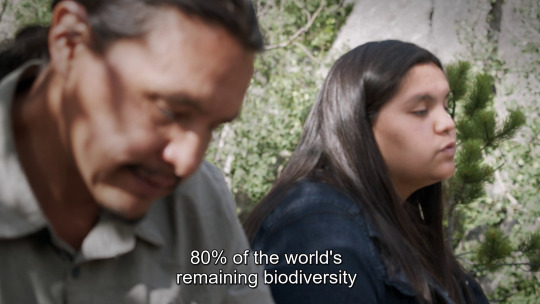
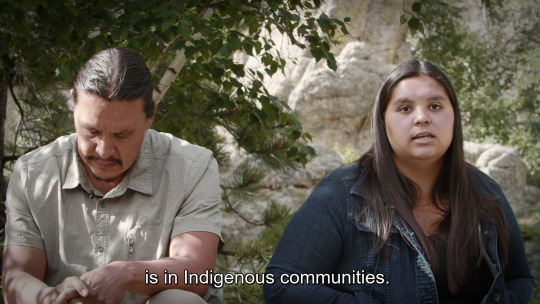

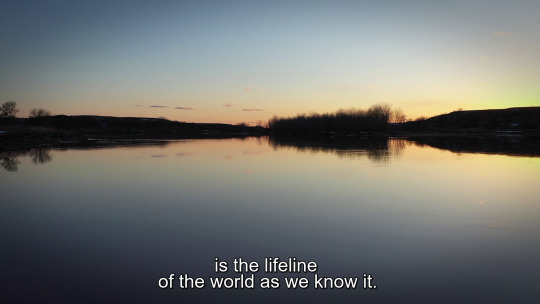
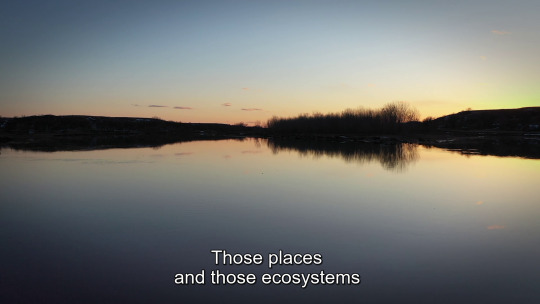
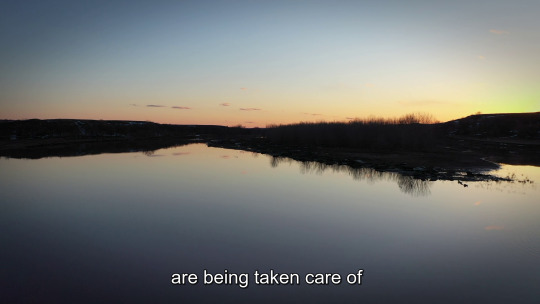



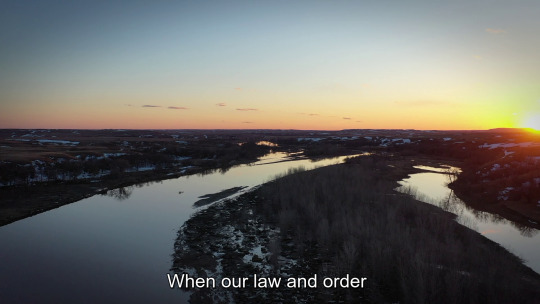
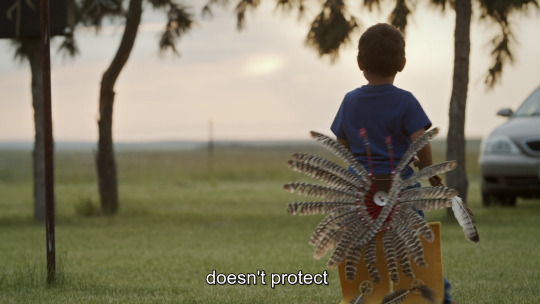
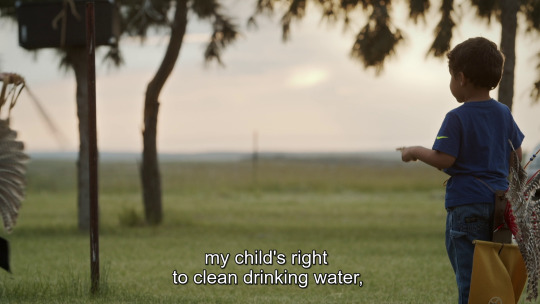

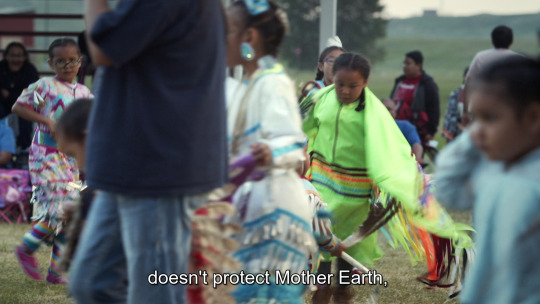
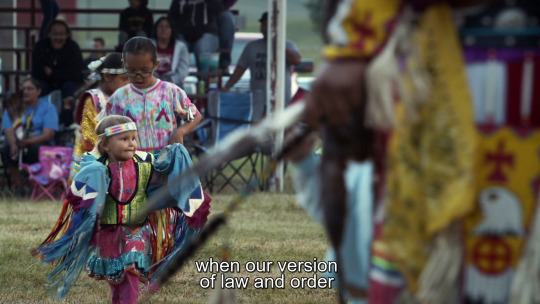
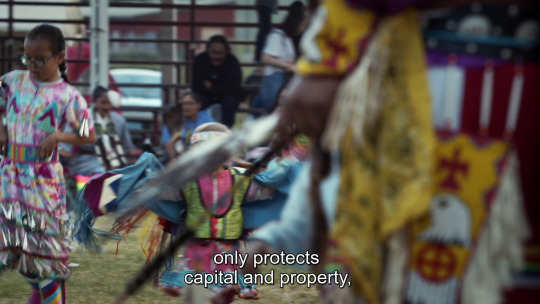
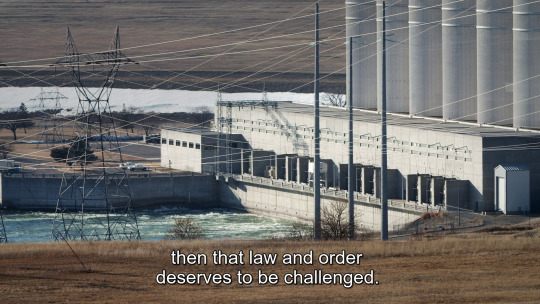
Chase Iron Eyes & Tokata Iron Eyes in Oyate (2022)
#native american#oglala lakota#dapl#indigineous people#indigenous#tokata iron eyes#chase iron eyes#biodiversity#dakota access pipeline
33K notes
·
View notes
Text

#happiness#inner peace#humanism#gorgeous#sexy and beautiful#beautiful body#perfect breast#beauty#native american#first peoples#nature#courage
454 notes
·
View notes
Text

Nez Perce Chief Joseph and his family in Leavenworth, Kansas where they were exiled from 1877 to 1885.
Photographer: F. M. Sargent
#reddit#snapshothistory#mlpp.pressbooks.pub#chief joseph#nez pierce#family#1880#1880s#1800s#photography#b&w#wikimedia.org#f m sargent#leavenworth#kansas#american indian#indigenous peoples#1870s#native american#history#november#united states
799 notes
·
View notes
Text

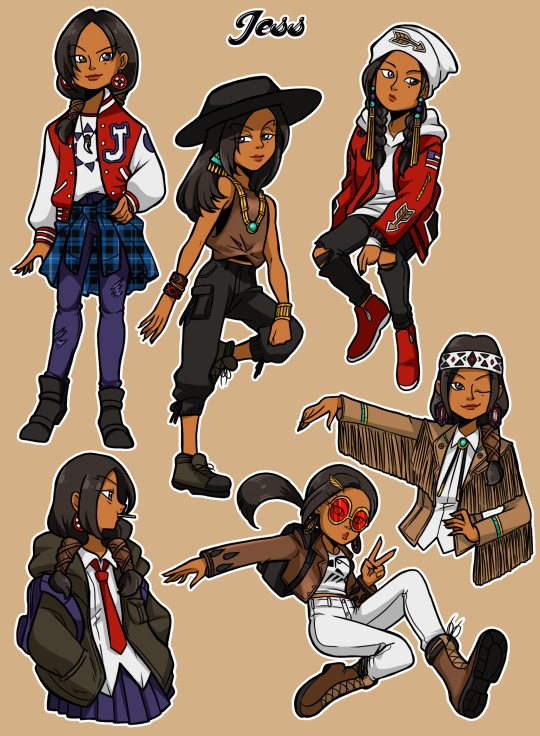
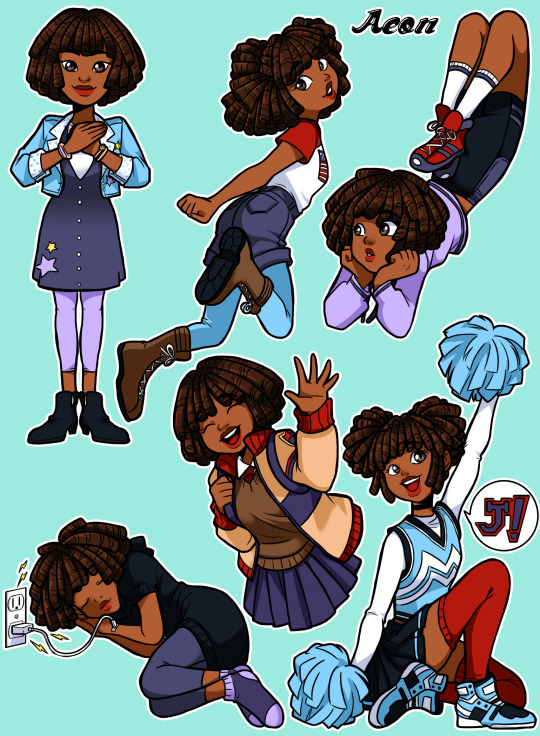



Some "Special" Girls! And the late girls.
Ko-fi | Patreon
#you don't even know how long I've held onto the Zoe one I made her with the quickness#I still haven't seen the Shanghai or New York Special I went in mostly blind on their looks#all the 'Specials' girls did get a redesign from me so the version where their mimicking their render pose is the redesign#though I kept Jess's hair wraps even though I don't love them#I know Native American people DO wrap their hair sometimes but I think it was to cop-out of animating her braids#my art#fashion#ml paris special#emonette#jess#aeon#new york special#fei#shanghai special#socqueline#zoe#socqueline wang#zoe lee#marinette#marinette dupain-cheng#ml art#miraculous ladybug
5K notes
·
View notes
Text
This is a salient argument for returning land stolen from indigenous people, written by a Caddo/Delaware writer who has spent over a decade as a ranger for the U.S. Forest Service. Our current situation with public lands at risk is yet another example where "we the people" have shown that we cannot be responsible for something so precious, and so the status quo cannot continue. The Landback movement--returning land to indigenous ownership--is one viable solution that has multiple potential benefits.
It's not just the land that has been grossly mishandled, but the rights and lives of indigenous people, too. The article states "It’s been argued that the United States violated every Indian treaty it signed. When a treaty is broken, much like when a home is repossessed, the property exchanged should be returned to its original owner for breach of contract." Landback is one way in which indigenous people are trying to get back at least a little of what has been violently stolen from them over the past few centuries.
Does it mean giving up control? Of course. But with current trends, we don't exactly have a lot of control when state or federal governments decide to allow clearcutting or strip mining on public lands. Will some places be closed off to the public if they end up back in indigenous hands? Perhaps, but at least they wouldn't be forcing the rest of us onto reservations, from which we were not allowed to stray. That's a more merciful treatment than they received.
Even if the general public were no longer allowed on a given piece of land, we would still benefit from its restoration and sustainable stewardship, through cleaner air and water, better biodiversity, and ecosystems allowed to return to more complex states over time. Moreover, indigenous communities would stand to benefit financially from the substantial tourism and other recreational activities on current public lands. Responsible management could balance access to popular sites with minimizing wear and tear, while ecologically fragile or culturally sensitive places could be off-limits.
Why not let something old become something new again, and see if we all fare better for it?
#Landback#Land Back#Indigenous people#Indigenous rights#Native Americans#United States#public lands#National Parks#National Forests#sustainability#habitat restoration#restoration ecology#land stewardship#articles#food for thought
518 notes
·
View notes